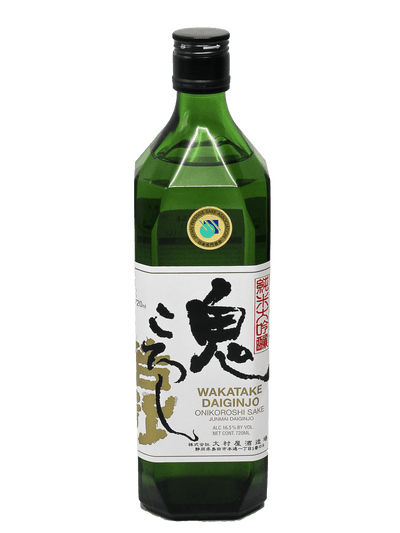What is Veraison and Why is it Important to Wine?

The green drop in Napa Valley is an annual event during the hot mid-summer heat. That means, as Biale Vineyards explains, “dropping any fruit that is not at least 80-90% colored up on the vines as well as removing any “second crop” (volunteer fruit usually higher on the vine shoots).” This relates to veraison, which the Oxford Companion to Wine says is the “intermediate stage of berry development which marks the beginning of ripening.” In Napa, “most green drops remove between 10-25% of the total crop, but in some cases, even more of the crop is removed,” according to Biale.
During veraison, the grape berries change in color and chemical composition, shape shifting from hard, green ovals to colored or translucent, plump grapes increasingly filled with natural sugars. The grapes double in size during this process, while acidity inside the grape also lowers. “The color of the grape before veraison is due to chlorophyll, and at veraison berry skin color change to re-black (anthocyanins) or yellow-green (carotenoids),” explains the Companion.
Certain Wine Grape Varieties Ripen More Unevenly
Veraison is a critical period, for Napa Valley wine or any wine region, watching for the perfect day to start green drop, but also paying attention to canopy management and microclimates. Not all grapes on a bunch ripen evenly, neither do the bunches themselves. Some varieties at veraison will show pronounced uneven ripening, which can translate into a problem during wine production. Unevenness commonly occurs in varieties like Pinot Noir, Sangiovese, Malbec, Gewürztraminer, and Zinfandel. The winemaker and the vineyard manager have different roles, but both have to pay close attention to veraison and ripening. There’s an incredible amount going on, and decisions to be made, during veraison, which also marks the commencement of cane ripening.
Cluster thinning, or the “green drop,” foliage management, taking berry samples, measuring sugar levels, considering microclimates, thinking about phenolics: all this enters into the picture.
Winemaking with Zinfandel or Pinot Noir, Malbec or Sangiovese, can have its challenges. When you order wine delivery, it’s good to appreciate what efforts produced that bottle of wine!
What’s the problem with a few green grapes or bunches? I already mentioned the relatively high acidity in grapes before veraison. In addition, the phenolic compounds and the type and size of tannic compounds in the ultimate wine will depend a lot on the ripeness of the grapes that go into the mix to make the must, which is the grape juice for fermentation.
Tannins lend a bitter taste to the wine, more so when they are smaller as they are in green grapes; so, the riper the grape, then better the mouthfeel of tannins. They are sensed by the tongue and gums, felt as being astringent, like drinking really bitter tea. “They bind to proteins in our saliva and then the tannin–protein complexes precipitate, giving a drying sensation in the mouth,” explains Dr. Jaime Goode.
The polyphenols, too, change in concentration during ripening. This affects the wine’s final flavor, aroma, and color. The color can change because of shifts in these compounds during winemaking and ageing. So, all in all, this is why veraison, and judging the state of ripeness, is critical while the grapes are still on the vine, before harvest. Adjusting the location and amount of foliage, giving more or less water (if there is irrigation, and observing ripeness based on location and aspect are all part of the job. “Exposed grapes on vines which have a high leaf to fruit ratio and which are experiencing mild water stress (and hence no active shoot growth) undergo veraison first,” says the Companion.
Biale explains, “Reducing the crop load allows the clusters that remain to receive all the nourishment that had previously been moving into cell division, shoot growth and water accumulation to begin to ripen the fruit. Instead of diffusing these nutrients into many clusters, they become focused into the few clusters that are left, resulting in more flavorful and intense fruit and subsequent wines!”
Veraison and Climate Change
With climate change in Napa and other wine producing regions worldwide, renewed attention is focused on veraison and assuring even ripening so that when you buy wine online, it has no off-putting flavors or aromas. This also means selecting specific strains of wine grape varietals in a rection to earlier ripening. R. Eibach and R. Töpfer write in Grapevine Breeding Programs for the Wine Industry: “Since overall earlier maturity can be recognized due to climate change and since . . . flavour composition degrades when ripening occurs at increased temperature, . . . breeders’ selection is predominantly focused on later ripening cultivars.” This makes grape breeding programs critical. “For all these characteristics, especially for ‘veraison’ and ‘grape maturity’, there is considerable genetic variation within the gene pool of V. vinifera, which can be used for breeding purposes.”
If you liked learning a bit about veraison, please check out our other informative wine articles. Remember, Bottle Barn ships superb wines across the USA when you buy wine online!


















Leave a comment